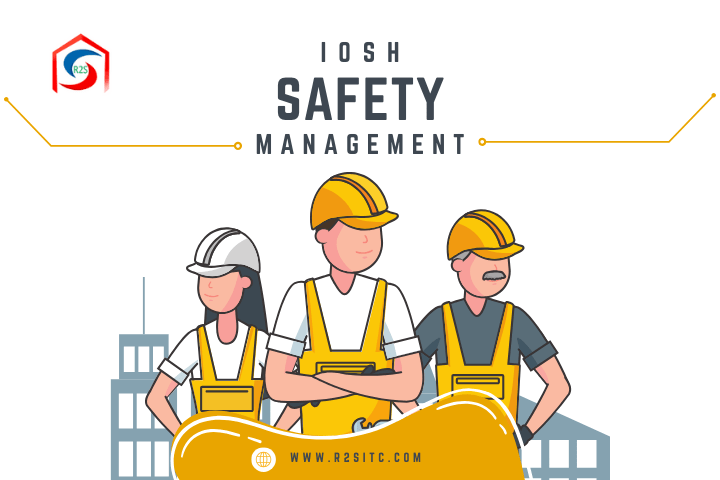In today’s fast-paced and ever-evolving work environments, the safety and well-being of employees remain a top priority for organizations across all industries. With the increasing complexity of workplace hazards and regulatory requirements, ensuring a safe and healthy work environment has become more critical than ever before. This is where IOSH (Institution of Occupational Safety and Health) management safety training plays a pivotal role. In this blog post, we will delve into the significance of IOSH management safety training in today’s workplace, exploring its importance, benefits, and implications for organizations and individuals alike.
What is IOSH Management Safety Training?
Before we delve deeper into the importance of IOSH management safety training, let’s first understand what it entails. IOSH is a leading professional body for occupational safety and health practitioners, with a mission to promote a safer and healthier working environment for all. IOSH management safety training programs are designed to equip individuals with the knowledge, skills, and tools needed to effectively manage safety risks and promote a culture of safety within organizations.
Importance of IOSH Management Safety Training
- Promotes Occupational Safety and Health: At its core, IOSH management safety training is about safeguarding the health and well-being of employees in the workplace. By providing participants with a comprehensive understanding of occupational safety and health principles, regulations, and best practices, IOSH training helps organizations create safer work environments and reduce the risk of accidents, injuries, and illnesses.
- Ensures Compliance with Regulations: Compliance with safety regulations and standards is essential for organizations to avoid legal liabilities, fines, and reputational damage. IOSH management safety training ensures that organizations stay abreast of the latest regulations and standards, helping them maintain compliance and meet their legal obligations.
- Enhances Safety Leadership: Effective safety leadership is crucial for driving positive change and fostering a culture of safety within organizations. IOSH management safety training equips individuals with the leadership skills, communication strategies, and motivational techniques needed to inspire and engage employees in safety initiatives, leading to improved safety outcomes and higher levels of employee morale and satisfaction.
- Empowers Risk Management: Risk assessment and hazard identification are fundamental aspects of safety management. IOSH management safety training provides participants with the tools and methodologies needed to identify, assess, and mitigate workplace hazards effectively. By empowering individuals with risk management skills, organizations can proactively address safety risks and prevent accidents before they occur.
- Cultivates Safety Culture: A strong safety culture is the foundation of a safe and healthy workplace. IOSH management safety training helps organizations cultivate a safety culture by promoting open communication, teamwork, and accountability around safety issues. By instilling a shared commitment to safety among employees at all levels, organizations can create an environment where safety becomes ingrained in every aspect of the work.
Benefits of IOSH Management Safety Training
- Reduced Incidents and Accidents: By equipping employees with the knowledge and skills to identify and mitigate safety risks, IOSH management safety training helps organizations reduce the frequency and severity of workplace incidents and accidents, leading to fewer injuries, illnesses, and downtime.
- Improved Employee Morale and Productivity: A safe and healthy work environment fosters higher levels of employee morale, satisfaction, and productivity. Employees feel valued and supported when their organizations prioritize their safety and well-being, leading to increased engagement and performance on the job.
- Cost Savings: Investing in safety training may require upfront costs, but the long-term benefits far outweigh the expenses. By preventing accidents, injuries, and illnesses, organizations can save significantly on healthcare costs, workers’ compensation claims, and productivity losses associated with absenteeism and turnover.
- Enhanced Reputation: Organizations that prioritize safety demonstrate their commitment to their employees’ well-being and social responsibility. This can enhance their reputation among customers, suppliers, investors, and the community at large, leading to greater trust, loyalty, and goodwill towards the organization.
Conclusion
In conclusion, IOSH management safety training is not just a legal requirement – it’s a strategic investment in the success and sustainability of organizations. By prioritizing occupational safety and health, organizations can create safer, healthier, and more productive work environments for their employees, while also reducing risks, costs, and liabilities. Whether you’re an employer looking to protect your workforce or an individual seeking to advance your career in occupational safety and health, IOSH management safety training offers valuable knowledge, skills, and opportunities for growth and development. So why wait? Invest in safety today and reap the benefits of a safer, healthier workplace tomorrow.



